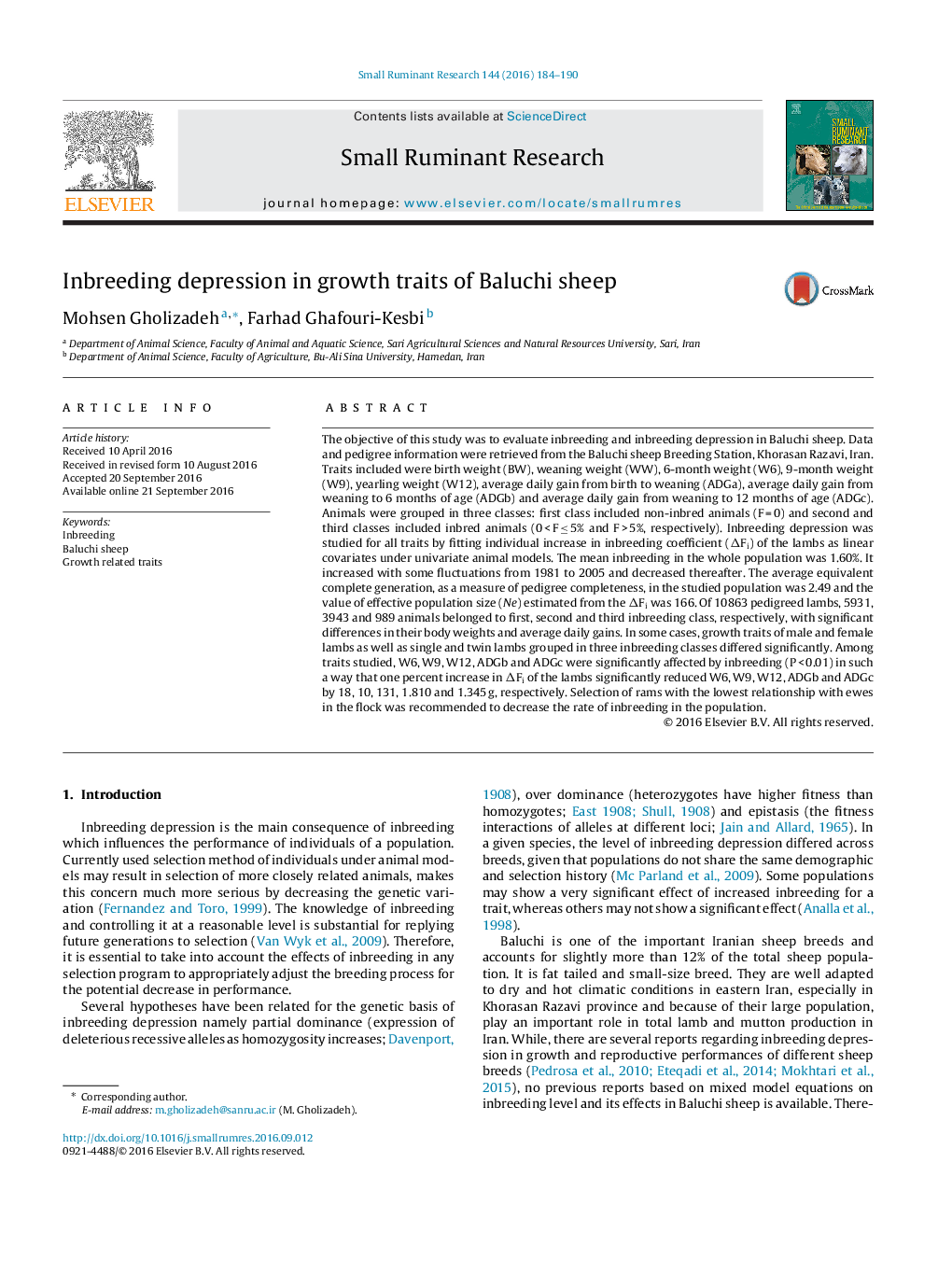| کد مقاله | کد نشریه | سال انتشار | مقاله انگلیسی | نسخه تمام متن |
|---|---|---|---|---|
| 5795282 | 1554348 | 2016 | 7 صفحه PDF | دانلود رایگان |
- Inbreeding and inbreeding depression were studied in a population of Baluchi sheep.
- The average inbreeding level estimated for the studied population was 1.60%.
- 989 animals (9.10%) had an inbreeding coefficient higher than 5%.
- The birth weight of non-inbred animals was higher than those of inbred animals.
- W6, W9, W12 and post-weaning average daily gain were affected by inbreeding.
The objective of this study was to evaluate inbreeding and inbreeding depression in Baluchi sheep. Data and pedigree information were retrieved from the Baluchi sheep Breeding Station, Khorasan Razavi, Iran. Traits included were birth weight (BW), weaning weight (WW), 6-month weight (W6), 9-month weight (W9), yearling weight (W12), average daily gain from birth to weaning (ADGa), average daily gain from weaning to 6 months of age (ADGb) and average daily gain from weaning to 12 months of age (ADGc). Animals were grouped in three classes: first class included non-inbred animals (F = 0) and second and third classes included inbred animals (0 < F â¤Â 5% and F > 5%, respectively). Inbreeding depression was studied for all traits by fitting individual increase in inbreeding coefficient (ÎFi) of the lambs as linear covariates under univariate animal models. The mean inbreeding in the whole population was 1.60%. It increased with some fluctuations from 1981 to 2005 and decreased thereafter. The average equivalent complete generation, as a measure of pedigree completeness, in the studied population was 2.49 and the value of effective population size (Ne) estimated from the ÎFi was 166. Of 10863 pedigreed lambs, 5931, 3943 and 989 animals belonged to first, second and third inbreeding class, respectively, with significant differences in their body weights and average daily gains. In some cases, growth traits of male and female lambs as well as single and twin lambs grouped in three inbreeding classes differed significantly. Among traits studied, W6, W9, W12, ADGb and ADGc were significantly affected by inbreeding (P < 0.01) in such a way that one percent increase in ÎFi of the lambs significantly reduced W6, W9, W12, ADGb and ADGc by 18, 10, 131, 1.810 and 1.345 g, respectively. Selection of rams with the lowest relationship with ewes in the flock was recommended to decrease the rate of inbreeding in the population.
Journal: Small Ruminant Research - Volume 144, November 2016, Pages 184-190
